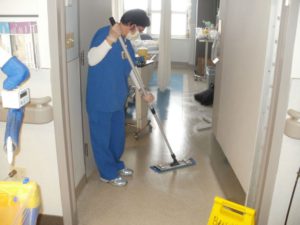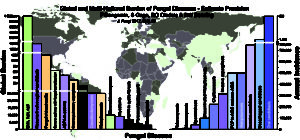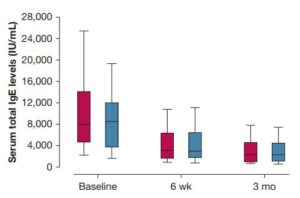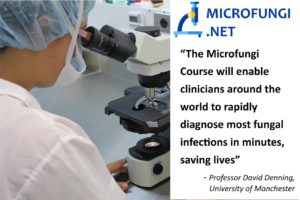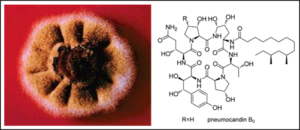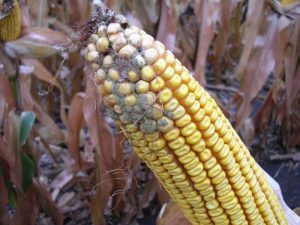Submitted by Aspergillus Administrator on 18 July 2008

The latest copy of the journal ‘Science’ features a series of special articles on drug resistance in bacteria and fungi, a major area of research to attempt to improve the effectiveness of many of our antibiotics.
Antibiotic resistance has four main mechanisms, one of the least specific of which is to pump the antibiotic out of the bacterial cell as fast as possible – the active efflux pump. The same mechanism has been discovered in fungi and is discussed here in detail. One of the main things that make the efflux pump mechanism a threat to the use of antibiotics & antifungals is that it is pretty non-specific about which antibiotic/antifungal it removed from the cell interior – one type of pump can remove most of the azole antifungal drugs so the cell that possesses that pump automatically becomes resistant to a whole series of drugs all at the same time – also known as multidrug resistance.
One feature of reflux pump resistance is that the antifungal drug itself is remains active, it is just that it is removed from the cell too quickly for it to kill the cell.
The Science review looks at attempts to interfere with or destroy the efflux pumps thus allowing antifungal drugs to accumulate within the cells, killing them.
It turns out that there are a few possible strategies: stop the cell from making the pumps (transcritional/translational control) or switch off the pumping mechanism by using molecules that look like azole drugs which the pumping mechanism can ‘grab hold’ of but can’t release, thus effectively blocking the pump.
More intriguingly a more thorough understanding of the function of these pumps has revealed that one of them, the plasma membrane proton pump (Pma1p) is important for both ensuring the cells remains healthy and is involved in the function of two other drug efflux pumps (ABC and MFS) . Interfering with that single pump attacks the fungal cells on more than one way – more encouragingly no resistance to inhibitors of that pump have been found, suggesting that the cell can find few ways around the loss of that pump. A two pronged attack involving a Pma1p inhibitor plus an antifungal drug could well prove to be an extremely effective combination in the war against fungi.
News archives
-
Title
Date

